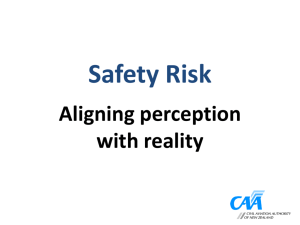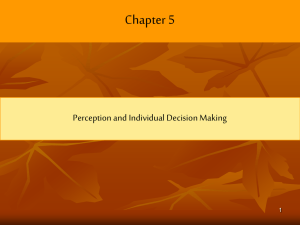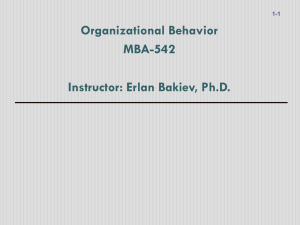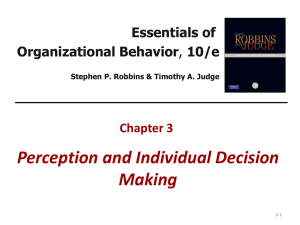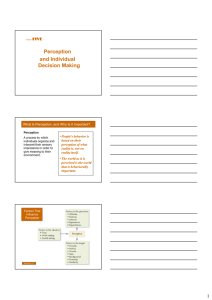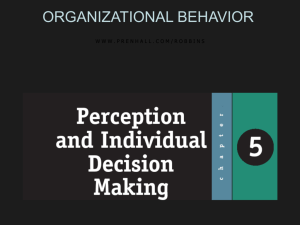Perception of Risk in Promoting Social Policies for Resilience
advertisement
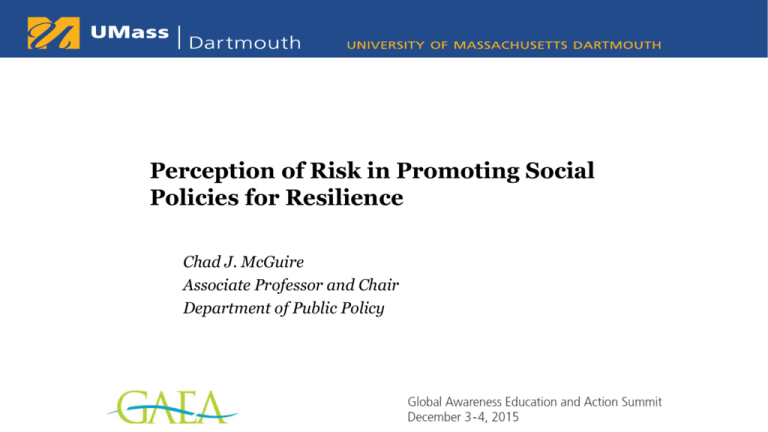
Perception of Risk in Promoting Social Policies for Resilience Chad J. McGuire Associate Professor and Chair Department of Public Policy Risk Perception • Risk perception is a function of both objective and subjective factors. • People discount the future in favor of the present (temporal discounting). • Changes in background conditions can influence risk perception. Preferences and Perceptions We tend to think of the future in positive terms, regardless of past experiences (evidence to the contrary). (Urminksy & Zaumerman, 2014) Blue: Bad Yellow: Good Dan Gilbert, Harvard Preferences and Perceptions We tend to devalue the future in favor of present utility. (Spangenberg, 2004) Blue: Bad Yellow: Good The future is at least as good as today, and today is not that bad. Preferences and Perceptions We tend to support our past decisions (choice-supportive bias). (Gordon et al., 2005) Glad we bought on the coast! Best decision we’ve ever made! Summary • The future is better than today. • I can make decisions about tomorrow based on what I see today. • I am biased towards reinforcing past decisions I deem “good.” Risk Perception and Climate Change • People perceive the risk differently because of bias. • Government actions can help support bias, or work to remove that bias. • Trick is establishing policies that help the public match perceived risk to actual risk. Actual Risk Perceived Risk Actual risks are clearly understood and communicated Actual risks are unclear and poorly communicated (McGuire, 2014) Why This Matters We are predisposed to support our past choices Mass CZM & Mass GIS, 2012 Scituate, MA Winter Storm 2015 Concluding Thoughts • Actual risks are increasing. • Our perception of risk plays “catch-up” to actual risks. • Actions require matching perceived and actual risks. • Government must take the lead.
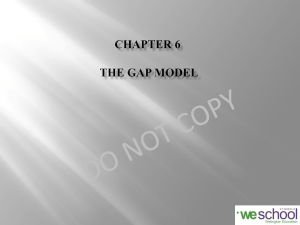



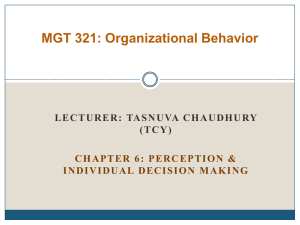
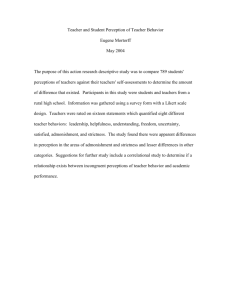
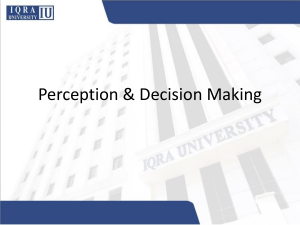
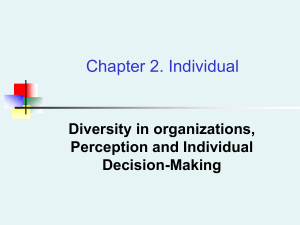
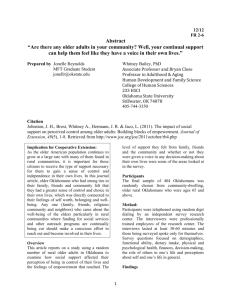
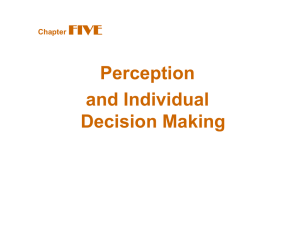

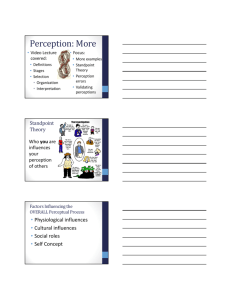

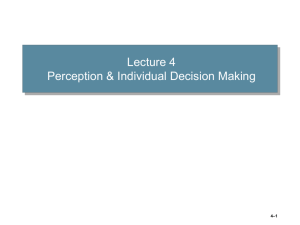
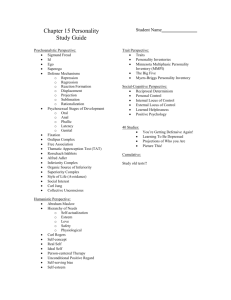
![[SUMMARY] Perilaku Keorganisasian (Chapter 6)](http://s3.studylib.net/store/data/008736782_1-213c4af9e889e5ea17408e8dd491fc35-300x300.png)
